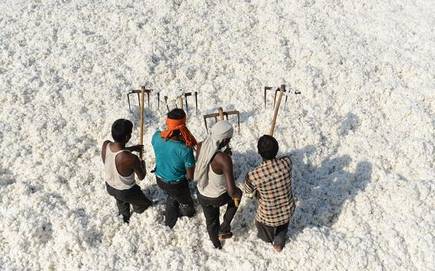The WTO hasn’t got the US to cut its cotton subsidies. This has hurt developing nations and distorted global trade in the commodity
Recognising the importance of cotton in agriculture development, poverty reduction and international trade, World Trade Organization (WTO) observed World Cotton Day on October 7. While this initiative is laudable, it does not conceal the harsh reality that the WTO has failed repeatedly in its efforts to improve the plight of poor cotton farmers in African countries by getting the US to cut its subsidies to cotton. It compels a sober reflection on what was the problem, how it was sought to be addressed and what went wrong.
For the past two centuries, cotton was an embodiment of slavery and colonisation. The need for employing slaves to cultivate and harvest cotton — a commercially lucrative crop — in the southern states of the US ultimately led to the American Civil War. The role of cotton in economic exploitation of India by the British is too well-known to be recounted. At the WTO, developments over the past 16 years suggest that cotton continues to remain a symbol of exploitation, poverty and hypocrisy.
The US holdout
The issue of cotton subsidies came into limelight in 2002, when Oxfam published a report titled Cultivating Poverty. The report delineated in detail how the huge subsidies provided by the US to its cotton growers had depressed global prices, diminished prospects of exports from developing countries and destroyed the livelihoods of cotton farmers in Africa. The adverse impact of US subsidies was felt most severely by African countries, whose economies were overwhelmingly dependent on cotton. These included Benin, Burkina Faso, Chad and Mali (referred to as the ‘C-4’ countries).
The Oxfam report shook the collective conscience of most of the trade negotiators at the WTO. Those were the early days of the Doha Round of multilateral trade negotiations, and a persuasive case was built by the C-4 countries for eliminating subsidies to cotton as a part of these negotiations. In fact, cutting cotton subsidies became the rallying cry at the Cancun Ministerial Meeting of the WTO held in 2003. However, what happened on this issue at the Cancun meeting highlights the hypocrisy of the US and failure of the WTO to negotiate for more stringent rules on cotton subsidies.
With most of the WTO members putting pressure on it to give a commitment to cut its cotton subsidies, the US was cornered. However, the US found it politically inconvenient to give any commitment on cotton. It tried to divert attention away from its subsidies and instead, in informal talks with the C-4, proposed action for product diversification in Africa. This strategy fuelled further resentment and frustration among developing countries.
According to some trade experts, after sensing that the sentiment of most WTO members was against its approach to cotton, the US ducked a detailed discussion on the issue by letting the Cancun meeting sink on other contentious issues. The US had succeeded in stonewalling the demand to cut its cotton subsidies.
Undeterred by the failure of the Cancun meeting, C-4 and other developing countries persisted in their efforts aimed at getting developed countries to cut cotton subsidies. This bore fruit during the Hong Kong Ministerial meeting of the WTO, held in 2005. At the insistence of developing countries, the US agreed to reduce cotton subsidies “ambitiously, expeditiously and specifically”, but as a part of agriculture negotiations under the Doha Round.
However, the US killed the Doha Round in 2015 and escaped reducing its cotton subsidies. This has also provided it a window to further distort global trade in cotton.

